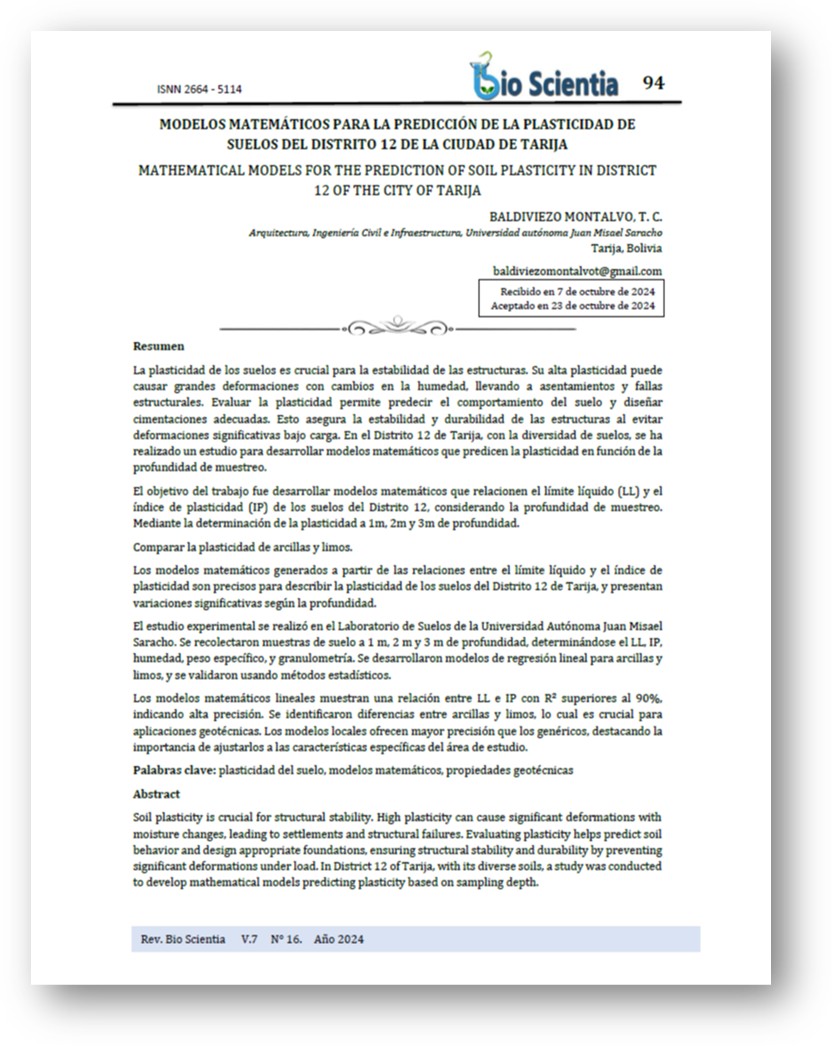MATHEMATICAL MODELS FOR THE PREDICTION OF SOIL PLASTICITY IN DISTRICT 12 OF THE CITY OF TARIJA
Keywords:
mathematical models, geotechnical properties, soil plasticityAbstract
Soil plasticity is crucial for structural stability. High plasticity can cause significant deformations with moisture changes, leading to settlements and structural failures. Evaluating plasticity helps predict soil behavior and design appropriate foundations, ensuring structural stability and durability by preventing significant deformations under load. In District 12 of Tarija, with its diverse soils, a study was conducted to develop mathematical models predicting plasticity based on sampling depth.
The study aimed to develop mathematical models relating the liquid limit (LL) and plasticity index (IP) of soils in District 12, considering sampling depth at 1m, 2m, and 3m, and to compare the plasticity of clays and silts.
The experimental study was conducted at the Soil Laboratory of Universidad Autónoma Juan Misael Saracho. Soil samples were collected at 1m, 2m, and 3m depths, determining LL, IP, moisture content, specific weight, and granulometry. Linear regression models were developed for clays and silts and validated using statistical methods.
The linear mathematical models show a relationship between LL and IP with R² values exceeding 90%, indicating high accuracy. Differences between clays and silts were identified, which is crucial for geotechnical applications. Local models offer greater precision than generic ones, highlighting the importance of tailoring them to the specific characteristics of the study area.



